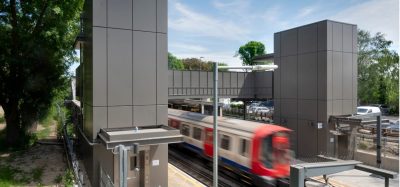The GNER approach
Posted: 2 March 2005 | | No comments yet
A RADICAL overhaul of driver training – that was East Coast intercity rail operator GNER’s response to industry-wide concerns raised by the Cullen inquiry into the Ladbroke Grove rail accident, plus the company’s ongoing challenge to attract new train drivers to join the business.
A RADICAL overhaul of driver training – that was East Coast intercity rail operator GNER’s response to industry-wide concerns raised by the Cullen inquiry into the Ladbroke Grove rail accident, plus the company’s ongoing challenge to attract new train drivers to join the business.
A RADICAL overhaul of driver training – that was East Coast intercity rail operator GNER’s response to industry-wide concerns raised by the Cullen inquiry into the Ladbroke Grove rail accident, plus the company’s ongoing challenge to attract new train drivers to join the business.
On 5th October 1999, a passenger train passed a red signal at Ladbroke Grove in West London before colliding with a high speed passenger train. As a result of the collision and the subsequent fires, 31 people died and over 400 others were injured. The public inquiry into the accident, chaired by Lord Cullen, made 163 recommendations, indicating the lessons to be learned from what happened in many areas including the training of drivers.
Meanwhile, feedback from GNER’s drivers and trainers suggested that traditional classroom based ‘chalk and talk’ methods to learn the rules, combined with long periods of driver observation, dubbed ‘Sitting with Nellie’, was too passive in its approach. It was also not always suited to the type of person attracted to the job of a train driver and led to potentially important gaps in performance amongst newly qualified drivers.
At a time when other train operators were adjusting their driver training programmes in response to Cullen, GNER decided to dissect its approach in minute detail to systematically address every single task a driver is required to do. These tasks would then be addressed, combining the skills of its existing trainers with people from a range of different backgrounds.
Vital to the success of this project was in-depth analysis of the process from the start and a willingness to break down the established model, to embrace new ideas combining the skills of people who knew a lot about training and a little about driving and vice versa. Due to its highly technical nature, driver training had until now been insular in its approach.
In September 2001, the project leader and team of driver trainers met for a two day workshop to identify the issues. To provide the support required, a steering group was formed. This ensured input and support from across the business, from the Production Director to human resources and to project management.
The core team also took advice and guidance from a wider team, comprising union representatives, experienced drivers as ‘on the job’ coaches, trainees, line managers, GNER’s Driving Standards Manager and not least, the driver trainers who delivered the formal training.
The involvement of this wider team brought huge value to the project in terms of delivering fresh ideas, building strong backing from union representatives and line managers and gaining feedback from trainees. Business support was crucial to ensure effective planning, and at the implementation stages. Here the management of complex rosters and shift patterns was needed to build in the involvement of trainees, coaches and assessors.
The project was led by the author, whose main task was to bring together a large team of stakeholders and secure their long-term commitment and determination to resolve issues.
Consultation was key to achieving this. For example, by attending and presenting at Company Council meetings, the author enlisted the strong support of union representatives and persuaded four of them to become driver trainers themselves, bringing with them direct experience and support that was extremely helpful to the project.
Between November 2001 and January 2002, GNER invested in a technical task analysis from Air Affairs, a company specialising in military training programmes involving risk and task difficulty. As train driving is safety critical requiring ongoing management of risk, GNER felt that it was imperative to get this component right at the start, recognising the true cost of taking a route that would not work.
This external advice helped the GNER team to break down every single task involved and, from there, to develop the course systematically, enabling them to address risks that need to be managed by effective training. At this stage, involvement from non-drivers at Air Affairs proved highly advantageous in helping to develop a fresh approach.
From there, the programme’s focus moved back in-house. Under guidance from the project manager, four training consultants devised and wrote the programme over a period of eight months. At the same time they continued to deliver training, during a period of high turnover, ensuring drivers were always available to fulfil timetable commitments.
Extensive research was conducted both within and beyond the rail industry in constructing the programme, including visits to other operations including other train operators, nuclear power stations, and fire stations to look at very different training techniques and to assimilate better practice.
In September 2002 the pilot course started, lasting 48 weeks, a marginally shorter duration than the previous driver training programme. Fulfilling its objective to be substantially more interactive, the course comprises 55% on the job training, 90% of which is productive work, reducing costs and ensuring training matches the demands of the real job, such as incorporating shift work and exposing trainees to the wide variety of different tasks that the job encompasses. This was supported by the development of existing drivers to become effective on-the-job coaches. Their role, and how it fits within the overall training programme, was defined in detail and discussed with each volunteer. A series of workshops were run with these drivers, focussing on the development of coaching skills. Difficult areas such as giving negative feedback, and tackling problems or lack of progress were included.
Motivation and commitment from this group of drivers has been very high, a critical factor in successful training. This has had positive spin-offs in other ways: for example, one driver commented that he had become much more interested in the skills and abilities involved in his complete job, whereas before working with trainees he “just turned up to work according to the rosters, and didn’t put much thought about it outside of this time”. Trainees now take part in a variety of jobs carried out at locations where trains ‘turn round’. For example, at London King’s Cross where there is access to trains on platforms for demonstration and practical work. One week is based solely at a maintenance depot for access to trainsets at ground and track level. This is combined with animated PowerPoint presentations, one-to-one demonstrations and group learning. DVDs have also been developed to assist with route learning.
This increased level of practical, applied and on-the-job training has improved satisfaction from trainees, but still leaves areas such as out of course and emergency procedures which are best addressed through simulation. The detailed task analysis work helped define these specific learning objectives, where simulation is the most appropriate training methodology. Currently simulation methods include simple tabletop exercises and role playing, which continue to prove effective tools in developing trainees’ interpretive skills. Future investment in more complex simulations, potentially involving Part Task Trainers or full interactive simulators, is likely to be associated with the awarding of a new Inter City East Coast train operating franchise, which is due to begin on 1st May 2005. GNER’s practical experience confirms that most training for new drivers can be done using ‘real’ train services at minimal additional cost, using ‘live’ situations rather than depending on comparatively artificial simulations constructed away from the reality of the operating railway. Therefore simulators will be used more for advanced skills training in out of course events for experienced drivers, rather than basic skill training for new trainees.
Risk management is the biggest contribution to GNER’s business, inspiring confidence and pride in the rigorousness of the company’s approach. So far, four of the new courses have been implemented, with the following tangible benefits:
- 48 trainee drivers have joined GNER in the last three years out of a total of 320 drivers, enabling continuous delivery of GNER’s timetable. Prior to this GNER had relied on the industry-wide practice of ‘poaching’ drivers.
- GNER has maintained an excellent Signal Passed At Danger (SPAD) record, compared to other train operating companies where newly qualified drivers have a higher incident rate than their more experienced colleagues.
- Performance has improved, measured by the regular competence assessments that trainees must pass within target dates as part of the training programme.
- Delays have been reduced because the training has helped with better fault finding.
- Aspects of the training have become a blueprint for other areas in the company, for example, simulation has become part of the guards’ training.
- A traditionally insular training group has embraced new ideas and effective working practices with the Driver Management Team.
GNER’s approach to the issue of driver training has set the benchmark for the rail industry – and importantly, continues to deliver positive results. The company’s readiness to challenge existing practices and incorporate feedback from its own drivers and trainers in developing its strategy is creating a highly successful model to shape future recruitment and training across the rail industry as a whole.






